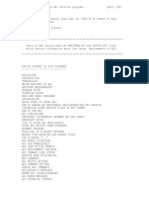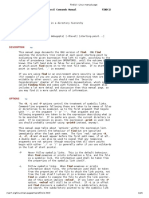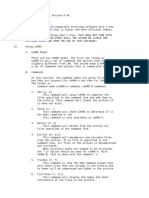aarch64-linux-gnu-ar(1) - Linux man pigé!
Name
ar - create, modify, and extract from archives
Synopsis
ar [--plugin name] [-X32_64] [-]p[mod [relpos] [count] [--target bfdname] archive
[member...]
Description
The GNU ar program creates, modifies, and extracts from archives. An archive is a single
file holding a collection of other files in a structure that makes it possible to retrieve the
original individual files (called members of the archive).
The original files' contents, mode (permissions), timestamp, owner, and group are
preserved in the archive, and can be restored on extraction.
GNU ar can maintain archives whose members have names of any length; however,
depending on how ar is configured on your system, a limit on member-name length
may be imposed for compatibility with archive formats maintained with other tools. If it
exists, the limit is often 15 characters (typical of formats related to a.out) or 16
characters (typical of formats related to coff).
ar is considered a binary utility because archives of this sort are most often used as
libraries holding commonly needed subroutines.
ar creates an index to the symbols defined in relocatable object modules in the archive
when you specify the modifier s. Once created, this index is updated in the archive
whenever ar makes a change to its contents (save for the q update operation). An
archive with such an index speeds up linking to the library, and allows routines in the
library to call each other without regard to their placement in the archive.
You may use nm









































